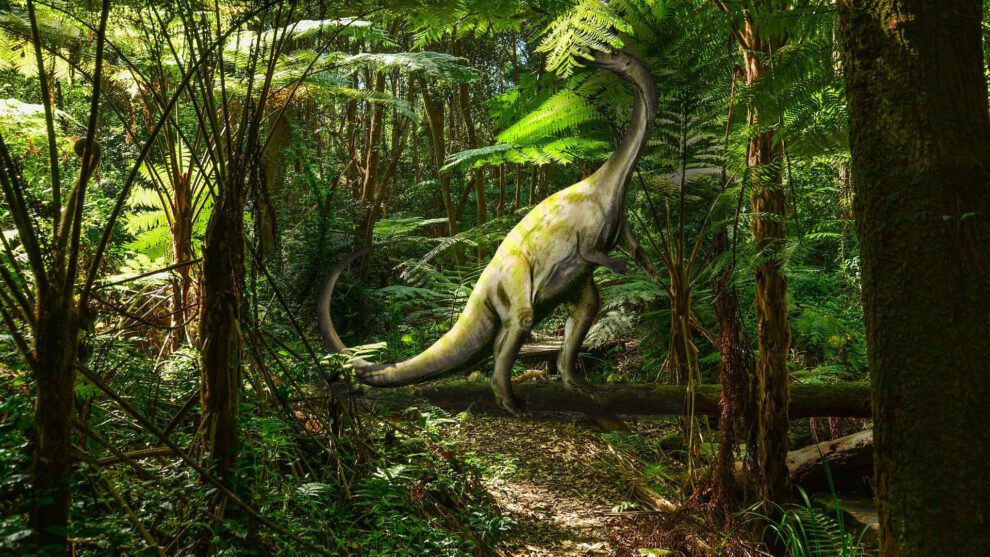This dinosaur weighed around 75 kg, making it one of the smallest known sauropodomorph species, and the smallest ever reported from the Jurassic period.
“Sauropodomorph dinosaurs were the largest land-dwelling vertebrates of all time, evolving body masses estimated at more than 90 tons,” said Dr. Kimberley Chapelle, a paleontologist with the American Museum of Natural History and the University of the Witwatersrand, and colleagues.
“However, the earliest sauropodomorphs that first evolved in the Carnian age (233-231 million years ago) were small omnivores (less than 15 kg), such as Saturnalia tupiniquim with a body mass of 11 kg.”
“By the Early Jurassic epoch (190-199 million years ago), early branching sauropodomorphs were globally distributed, had a range of postures and evolved masses exceeding 10 tons,” they added.
“Smaller early sauropodomorphs (less than 1 ton) are comparatively rare, although species like Massospondylus carinatus (adult body mass around 550 kg), and Adeopapposaurus mognai (immature body mass around 55.89 kg), persist at least until the Pliensbachian at nearly all dinosaur-bearing localities worldwide, and in the case of Massospondylus carinatus can be locally superabundant.”
“One potential reason for the scarcity of smaller early sauropodomorphs is interspecific competition and niche occupation by other herbivorous groups, including gomphodont cynodonts in the Late Triassic, early branching ornithischian dinosaurs as well as potentially herbivorous early branching crocodyliforms in the earliest Jurassic, and secondarily herbivorous theropods in the Late Jurassic.”
The newly-identified sauropodomorph species lived in what is now South Africa about 195 million years ago.
The dinosaur’s left humerus was first uncovered in 1978 in the Elliot Formation in the Free State of South Africa.
The bone tissues of the specimen indicate that the individual is fully grown with a body mass of 75.35 kg.
“The fossil was provisionally referred to as Massospondylus carinatus in comparative studies with Anchisaurus polyzelus and Arcusaurus pereirabdalorum,” the paleontologists said.
“The specimen is approximately 49% the size of the largest known Massospondylus carinatus specimen, which, if these historical referrals are correct, suggests it is an immature individual.”
“In the new study, we show that the humerus bears autapomorphic features questioning this referral, and that it represents a skeletally mature individual.”
The new dinosaur is one of the smallest known sauropodomorph species, and the smallest ever reported from a Jurassic layer.
“It is the first mature early sauropodomorph species with a maximum size lower than 100 kg, with the second smallest species being Ngwevu intloko, which is approximately 1.43 times the size in estimated body mass at the near-adult stage (i.e. 107.91 kg),” the researchers said.
According to the authors, the new species belongs to the sauropodomorph dinosaur clade Massopoda.
“The discovery of this new small-bodied species increases the diversity of Early Jurassic sauropodomorphs in the Upper Elliot Formation and represents the smallest known sauropodomorph to have lived during the Jurassic,” they said.
The discovery is reported in a paper in the journal Royal Society Open Science.
Source: Sci News















